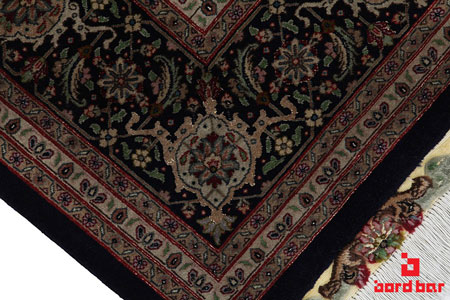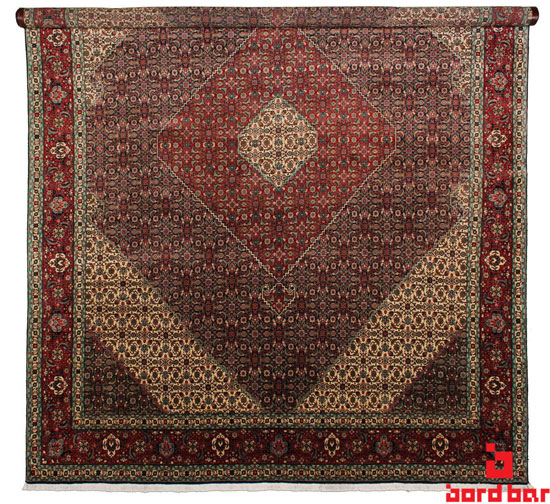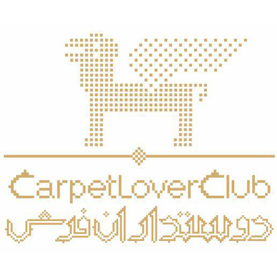Patterns

The Mahi are available in a range of patterns; however, those which are held in great regard have a single medallion surrounded by vines and palmettos. Classic color triads, including midnight blue, red, beige, camel brown and burnt sienna combined with soft green accents, are typical of the Mahi. Including the designs created in the fashion of the traditional Persian legacy, more modern ones make use of angular motifs and curvilinear vine scrolls with superfluous floral details.
Mahi Tabriz
The Persian Mahi rug is one of the classic patterns produced by the masterful carpet weavers in Tabriz. Said to originate in the Herat district of Afghanistan, the so-called Herati or Mahi pattern has been attributed to Farahan and other regions too. Regardless of the attribution, few weavers use the Mahi design as skillfully as those in Tabriz. Between the long ridge of the Sahand Evnali mountains of Azerbaijan, Iran, lies the Quru Valley. Across that valley is the highly populated yet charming city of the land, Tabriz. Credited to be the city with the most renowned and unique handcrafted carpets, Tabriz has long been the major producer of the prominent Iranian rugs. Because of the excellent quality, exceptional design and versatility their use, Tabriz carpets are very popular worldwide; among them, the most sought-after are those of a very particular, distinctive design of “Mahi” or “Mahi to Hos”. The Tabriz Mahi motif is used for everything from border motifs to medallions and allover patterns, but the most impressive style is the Persian Tabriz Mahi rug that features an inset medallion decorated with a continuous Mahi pattern. It’s not uncommon for carpets to feature a solitary motif placed in a medallion set over a background of allover Mahi motifs woven in contrasting colors. Tabriz Mahi rugs are often woven in muted earth-tones that downplay the intricacy of the field. Classic color triads, including midnight blue, red, beige, camel brown and burnt sienna paired with soft green accents, are commonly used for weaving Persian Mahi rugs. The traditional color palette and bold allover pattern make the Persian Tabriz Mahi rug a popular choice for living areas and high-traffic spaces.
Materials and Texture

Something that sets Mahi carpets apart from the rest is its particular weaving style, wherein special ties are used that ensure the strength of the rug for long-term wear. Materials used for the pile (the density of the fibers used) are cotton, silk, wool, or a mixture of both wool and silk. An immensely high quality Mahi Tabriz includes in its foundation pure silk instead of cotton — some even have 18 or 24 karat gold threads woven into the pile. Carpets of good quality use both wool and silk, while those of a lesser quality solely use wool. Rugs of outstanding quality can be found for sale worldwide, but the ones which use the gold threads in their making are obviously the rarest, and hence are the most expensive.
Weaving Techniques

The traditional Persian Mahi rug from Tabriz is precisely woven using the symmetric Turkish knot at a rate of 80 knots per square inch. Most high quality Persian Tabriz Mahi rugs are typically 50 raj or 350-375 kpsi. Tabriz has a long history of master weavers that continues today with artisans like the Pirouzian family who create Persian Mahi rugs using fine Kurk wool with silk accents that add an extra level of beauty to the elegant Mahi design.
Bijar
In rugs like the Bijar where the same allover mahi pattern is often executed with a far lower knot count, the visual allure and balance of the design is lost. The lack of detail can make the pattern look busy, muddled and confusing. this lack of detail actually adds to the charm of the herati pattern on Bijar rugs. A sharper, more accurately executed motif is not necessarily more aesthetically pleasing.
Ferahan
Ferahan rugs, produced in the city of Arak, from the 19th and early 20th century CE, were famous for the all-over herati design and even gave their name to the pattern. The term ‘ferahan design’ is no longer used to describe the repeating Herati although the moniker can certainly be attributed to their frequent and successful excecution of the pattern in these rugs. In contrast to the uniform way the design is used in Tabriz rugs, Ferahans have a more spontaneous style which gives an overall look of naive charm much like the Bijar.




